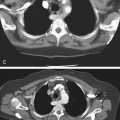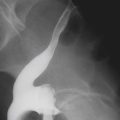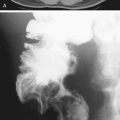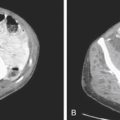CASE 20
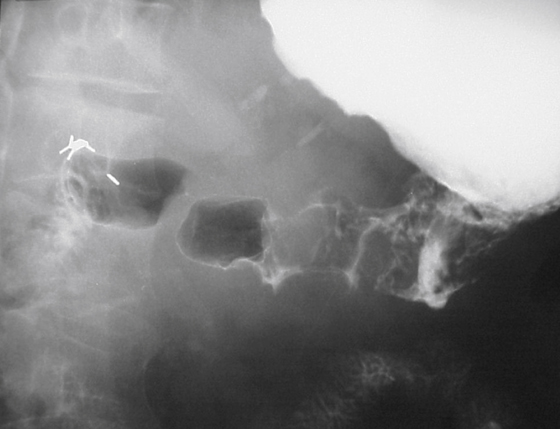
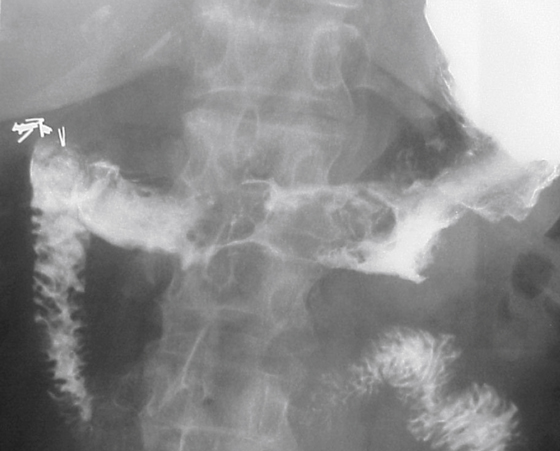
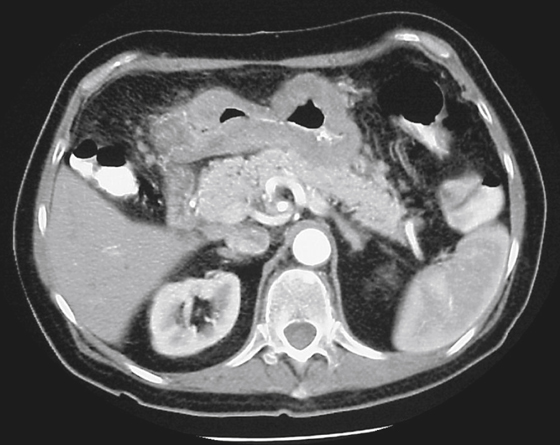
History: An 83-year-old woman presents with nausea, vomiting, and weight loss.
1. Which of the following should be included in the differential diagnosis of the imaging findings shown? (Choose all that apply.)
C. Hematogenous breast cancer metastasis
D. Direct spread from pancreatic mucinous cystadenocarcinoma
E. Peritoneal ovarian cancer seeding
2. What is the single best diagnosis?
C. Hematogenous breast cancer metastasis
D. Direct spread from pancreatic mucinous cystadenocarcinoma
E. Peritoneal ovarian cancer seeding
3. What is the most common type of primary lymphoma of the stomach?
C. Mucosa-associated lymphoid tissue (MALT)
4. Which of the following is not a known risk factor for gastrointestinal lymphoma?
ANSWERS
CASE 20
Gastric Lymphoma
1. A, B, C, and E
2. A
3. C
4. D
Reference
Dahnert W. Radiology Review Manual. 6th ed. Philadelphia: Lippincott Williams & Wilkins; 2007. pp 851-852
Cross-Reference
Gastrointestinal Imaging: THE REQUISITES, 3rd ed, p 60.
Comment
The stomach is the area of the gastrointestinal tract most commonly affected by lymphoma. It may be part of generalized lymphoma involving other portions of the body and lymph system, or it may be primary, involving only the stomach and associated lymph nodes. Approximately half of all cases are primary lymphoma, and half are associated with generalized disease.
Lymphoma accounts for only 5% or less of primary gastric malignant neoplasms. Most lymphomas of the stomach are of the non-Hodgkin’s variety, with Hodgkin’s disease being the least common. Hodgkin’s lymphoma typically accounts for less than 10% of cases. The disease predominantly affects men and is typically seen in an older age group (50 years and older).
Lymphoma has a variety of presentations in the stomach. It can appear as thickened gastric folds and be indistinguishable from gastritis and other causes of rugal fold thickening. It can also occur as a solitary mass or as multiple masses and polyps. These masses are known to ulcerate. Rarely, it infiltrates the entire stomach and produces more of a linitis plastica appearance, but this is more typically seen with Hodgkin’s lymphoma because of the cellular desmoplastic reaction associated with it (see figures). Lymphoma readily crosses the pylorus into the duodenum, somewhat more readily than does carcinoma. However, both are known to cross the pylorus, carcinoma in greater numbers because of its greater incidence. It is not a specific distinguishing feature.
Surgical resection of the involved stomach is still the best treatment and may be supplemented by chemotherapy, depending on the situation. Patients with advanced primary disease or systemic lymphoma are best treated by chemotherapy first.

